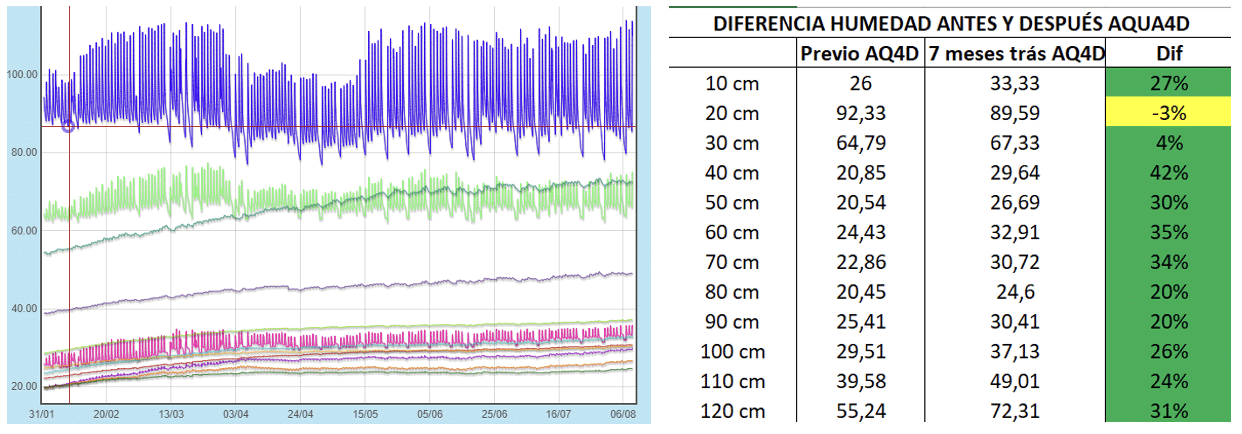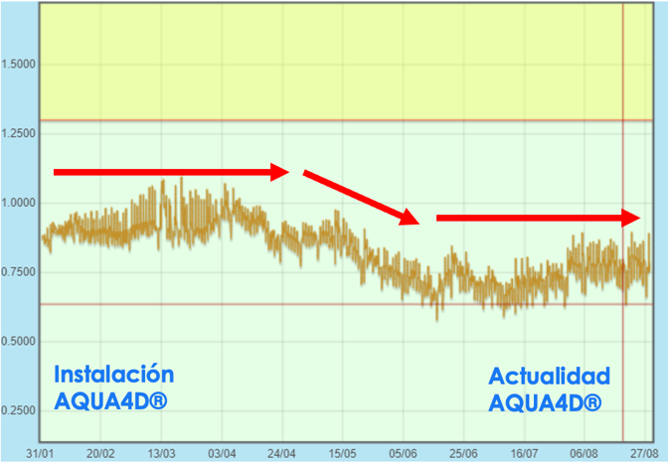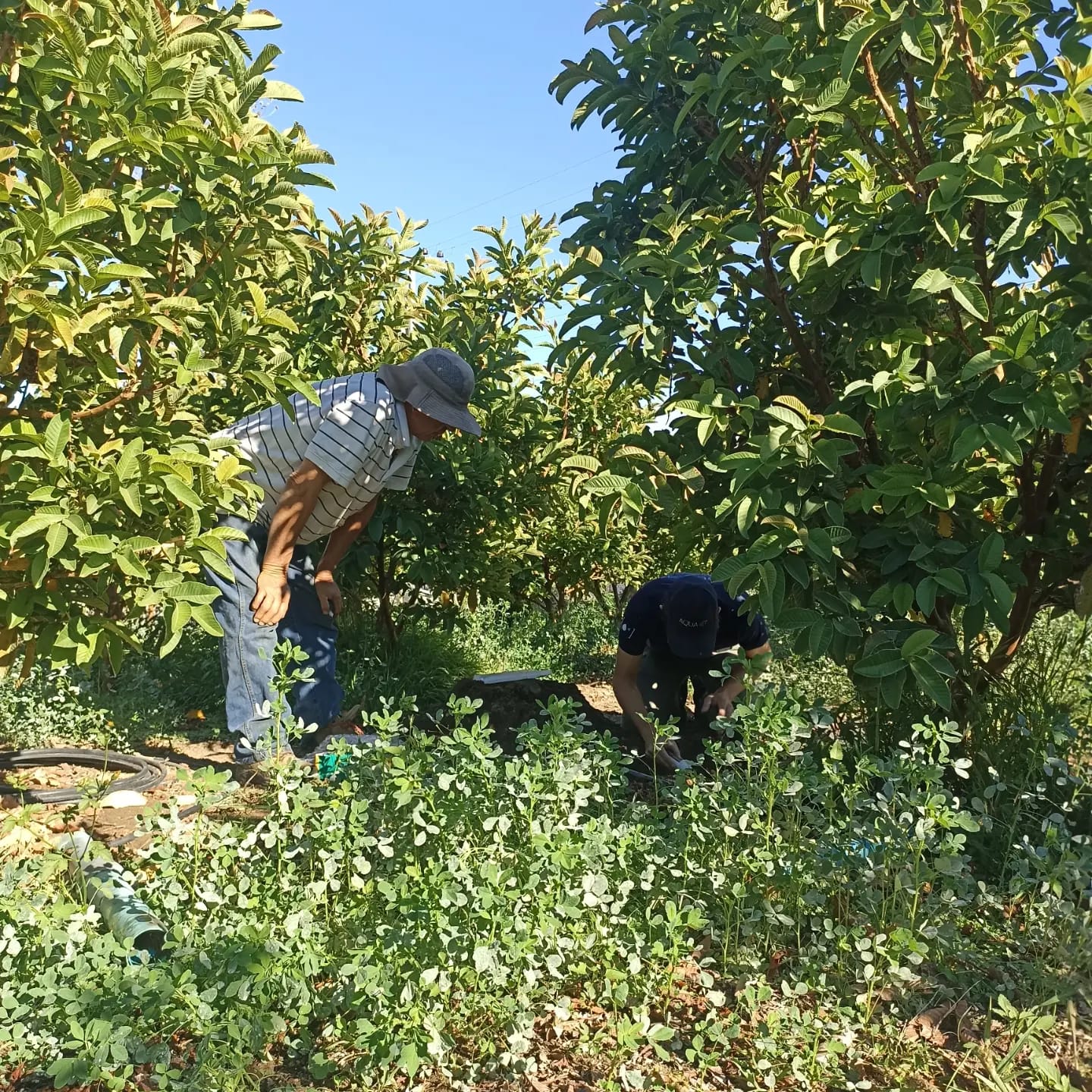In the arid north of Chile – next to the driest place on the planet, the Atacama Desert – water scarcity has long been a fact of life. Along with increasing salinity levels and poor quality water sources, this makes agricultural production here a constant struggle. With the aim of sustainably addressing these issues, in 2023 AQUA4D LatAm was involved in a landmark project here launched by CORFO (the national government’s development initiative). The impacts on farmers and their crops have already been positive, and may also hold the key to the future of agriculture in the region.
In the Oasis de Pica in northern Chile, water scarcity is exacerbated by the management of salts in the soil and water, and harmful minerals such as boron which lead to productivity losses. The situation was so bad that farmers had begun selling their land and abandoning their trade. If continued unabated the further consequences would be disastrous for the region, whose unique lemons are part of national heritage and granted an Appellation of Origin. CORFO stepped in with a timely intervention, involving Santiago-based AQUA4D LatAm in the sharing of knowledge, practices and technologies which can improve efficient use of resources.
“The objective of this 12-month program has been to accompany to arm the farmers with knowledge and techniques to address water scarcity and the management of salts that negatively impact the productivity of the area,” explained Felipe Villarino, CEO of AQUA4D LatAm. “So far, the results have exceeded expectations but there is still a lot to do to extend our impact.”
Technology transfer and education
The first step of the project was holding seminars and workshops for the community, discussing the benefits of precision irrigation and monitoring and introducing some of the latest technologies.
In practice, this technology transfer involved field work with 15 farmers from Pica and the town of Matilla. Thanks to funding by CORFO, the farmers were given and trained in probes that measure moisture and electroconductivity of soils in real time, among other manual measurement tools. “For this stage of the project we did several talks and visits to understand the problems of the area, which has a unique climate with very sandy soils, which was a great challenge for us,” said Patrick MacKinnon, agronomist at AQUA4D LatAm.
“From the moment I joined this project, I realized how beneficial it was going to be,” said Romulo C, a local farmer. “We have been given new knowledge and techniques to better manage our plots and allow us to optimize resources in this desert area.”
Moister soils and water savings
Wider project implementation involved the installation of AQUA4D® irrigation technology, which has seen notable successes in Chile and other water-stressed regions. This treatment of water can allow continued irrigation with poor quality groundwater, while saving much needed water by keeping soils moist and thus reducing irrigation needs.
These results were tracked using monitoring probes, thus allowing an insight into the changes in the plants & soils brought by AQUA4D – as well as showing the farmer they can change their irrigation cycles. For example, at Andres Loayza’s farm, a key site which installed AQUA4D®, results show a median 24% increase in moisture in the soil from 10-120cm in depth:
By paying close attention to this increased moisture, the farmer could then adapt their irrigation practice and save much-needed water.
“My plot was benefited by probes that work with solar energy and emit certain very important information,” reports Romulo C. “Thanks to the instruments we have been able to know how the moisture is maintained from one irrigation to another, and according to that, I can irrigate differently. Instead of watering 5 minutes, I can water 4 minutes. For 150 plants, saving 1 minute is significant. All this has happened thanks to this project, to me and to all the beneficiaries who are part of this project, it will undoubtedly mean a step forward”.
A further indication of the changing fortunes of the Laoyza plot was the crucial aspect of refill – a measurement of the field’s overall capacity to hold water. Here again field capacity is now at 100%, whereas in February this was a mere 60%:
Salinity reductions and increased productivity
It’s widely recognized that drought goes hand-in-hand with salinity. The high mineral content of the water in Pica exacerbated salinity issues in the soil, and harmed production by limiting absorption and plant health.
With AQUA4D® technology, the growers in Pica were able to not only save water but manage these dangerous salinity issues. Close monitoring showed that over a few months in 2023, salts were mobilized through the soil and out of harm’s way:
Last but not least, analysis also shows increased nutrient absorption, meaning reduced application of fertilizers. Over time, this will further improve soil quality for future generations.
Conclusions
The agronomist Constanza Reyes oversaw the project for AQUA4D, with frequent visits to the region. “This project has been a resounding success in providing farmers with various technologies and training for the efficient use of water,” she says. “This magical place, home to the renowned ‘Pica lemon’, faces significant challenges in water quality problems and water scarcity. Some farmers receive water supplies for their crops only every 15 days. It is essential that our country’s various institutions concentrate their efforts on strengthening and preserving this priceless place.”
Thanks to the support of CORFO and this technology transfer program, Pica’s farmers have taken giant strides towards guaranteeing the agricultural future of this precious region.








